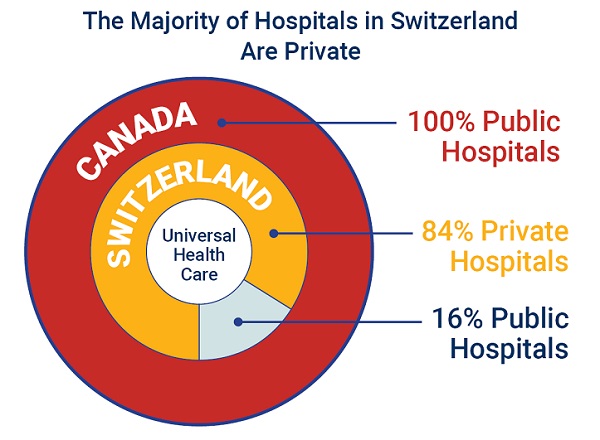DEI
WEF report suggests digital ‘metaverse identity’ will become central to daily life

From LifeSiteNews
Your digital identity will be your passport in the metaverse, where it will be used to surveil, predict, and mimic your behavior while determining your level of access to information and spaces.
Your metaverse identity, with its digital ID, biometric data capture, and behavior profiling, will be central to your everyday life, according to a World Economic Forum (WEF) report.
“Metaverse identity” is a relatively new concept that the WEF and Accenture describe in great detail in a new 48-page report entitled “Metaverse Identity: Defining the Self in a Blended Reality.”
According to the report:
“As people spend more time exploring, playing and socializing in digital experiences, a person’s metaverse identity will be central to their day-to-day life as well as to the way they express their personal identity.”
But what exactly do the unelected globalists mean by “metaverse identity?”
Metaverse identity encompasses three components:
- Representation: including personal, social and role identity, be it through avatars, pseudonyms or other digital expressions.
- Data: capturing the intricate web of knowledge about individuals generated by metaverse supporting hardware and software.
- Identification (ID): be it through driver’s licenses, government-issued IDs, passports, birth certificates, attestations, labels, or usernames and passwords.
According to the report, “Metaverse identity broadens ‘identity’ as it is known today and combines it with the digital underpinnings of the internet. It is a multi-layered construct of an individual or entity, including everything from representation to data and identification.”

With these three components, identity in the metaverse “connects and anchors a person to the physical and virtual world.”
Let’s break them down, starting with representation.
The notion of ‘representation’ is not just about pixels and graphics; it’s a reflection of societal values, inclusivity and the human desire for authenticity […] Representational design choices extend to the design of digital entities – from embodied virtual agents to non-embodied virtual assistant.
Representation has to do with how you present and express yourself in the metaverse, whether it’s a realistic likeness of yourself or an abstract, creative, or artistic version.
The authors say that, “These expressions may extend to include words, actions, behaviors and mannerisms,” so there is an element of behavior profiling going on in the representation category, which we will also see in the data capture and identification categories.
Representation in the metaverse will also take on a new meaning with the introduction of digital entities that act on your behalf.
According to the report, “Digital entities may represent humans, objects, systems or abstract concepts, and are capable of varying degrees of interaction, autonomy and behavior within digital experiences […] They are capable of mimicking human communication and may be used as sales assistants, corporate trainers, social media influencers and more.”

Like non-player characters (NPCs) in videogames, these digital doppelgangers attempt to mimic human behavior.
And like a virtual voodoo doll, if something goes wrong with your digital entity, it could spill over into your personal life in the real world.
“While digital entities can offer innovative interactions and functionalities within the metaverse, they may commit real-world harms,” the report cautions, adding, “The ability to manipulate or create misinformation through digital entities – such as chatbots and photoreal avatars – raises ethical and security concerns.”
Now let’s dig into the data category.
Identity goes beyond ID, like a passport or driver’s license. Metaverse identity includes data points.
The data category of metaverse identity is aimed at gathering and analyzing data to make inferences about you, and it will be used to predict your behavior, thanks to AI and Machine Learning.
“Paired with artificial intelligence (AI)/machine learning (ML) models that can analyze a person’s interactions, movements and preferences further generates identity,” the report reads.
Whether these (inferred) data points are capturing a person’s current activities, predicting their next action or future preferences, these data-based breadcrumbs provide information into one’s identity.
These attributes may influence the way the virtual environment responds to an individual, and outsiders perceive an individual or entity.
This data aspect of metaverse identity is important to unelected globalists who are obsessed with manipulating human behavior and controlling what people think and do.
There is a risk that governments could use aggregated inferred data for surveillance, monitoring dissidents, or suppressing certain groups without their active consent.

Inferred data, “now aided by AI/ML, can examine seemingly unrelated behaviors, actions and choices to draw meaningful conclusions about a person’s preferences, background and intentions,” according to the report.
Once you know intent, whether of an individual or an unelected globalist think tank, then it becomes a lot easier to predict what they’ll do or say next, even if they deceptively try to mask their true intentions.
And, “While this data is collected to enhance the person’s experience, it could also be analyzed to make inferences as to their real-world identity or preferences and used for targeted advertising or other purposes without their consent.”
Making inferences for “other purposes” without the user’s consent is what defense and intelligence agencies are after in the metaverse.
A recent RAND Corporation report suggests as much with respect to the U.S. Department of Homeland Security (DHS) looking to spy on users in the metaverse, stating, “As DHS grapples with emerging challenges by monitoring and analyzing users’ activity in metaverses, it should undertake legal and ethical reviews of what information is collected and how it is managed.”
Now, we shall move on to the identification category.
The concept of identity is contextual, flexible, complex and fluid […] Identity extends into the intricacies of an individual’s behaviors, actions and choices.

Perhaps the most confusing part of metaverse identity is the identification or ID aspect because digital ID and digital identity are terms that are often used interchangeably, including by yours truly, but they are quite different.
Identification is about identifying, verifying, and authenticating who someone is.
Identity on the other hand, “consists of layered aspects of cultural heritage, ethnicity, age, professional and social roles, hobbies, gender identification, sexual orientation and much more,” according to the report.
Now that we’ve taken care of the distinction between the two, your digital ID will be your passport to the metaverse, and like with a passport, there will be certain areas that you will not be able to access.
According to the report, “Similar to today’s traditional identification systems – like passports and driver’s licenses – IDs may evolve to include unique avatar designs, new body-based attestations or unique virtual signatures that validate one’s existence and grant access to specific realms or activities.”
To illustrate how digital ID plays into digital identity, the authors say, “Forms of ID – such as passports and government IDs – formalize an individual’s identity; additionally, these can serve as credentials or means of authenticating and verifying individuals across physical and digital spaces.”
Metaverse identity is integral to future internet interactions.

Now that we’ve gone through the three components that make up metaverse identity, what are some of the potential drawbacks?
For starters, the report says, “There is a risk that governments could use aggregated inferred data for surveillance, monitoring dissidents or suppressing certain groups without their active consent.”
Your metaverse identity can include your real-time biometrics, such as pupil dilation, heart rate, and brainwaves, so that companies and governments can infer how you are feeling and reacting to their goods, services, or policies.
Historian Yuval Noah Harari spoke of this same technology falling into the hands of dictators at the 2020 WEF Annual Meeting in Davos. There, he said:
Just imagine North Korea in 20 years where everybody has to wear a biometric bracelet, which constantly monitors your blood pressure, your heart rate, your brain activity 24 hours a day.
You listen to a speech on the radio by the ‘Great Leader,’ and they know what you actually feel – you can clap your hands and smile, but if you’re angry, they know you’ll be in the gulag tomorrow morning.
Having a biometric data capturing device attached to your body that knows what you’ll do before you do it raises serious ethical questions about how the data is collected, where that data goes, and who has access to some of the most intimate details of your life.
For the past few years, Meta has been working on Project Aria, which combines augmented reality with artificial intelligence to create realistic 3D renderings of people, places, and things, including living spaces.
When Mark Zuckerberg explained his vision for the metaverse at Connect 2021, he highlighted how Project Aria could map a person’s apartment, including everything in it (see video below).
Imagine how valuable that information would be to companies – knowing which products you use, which ones they think you’ll want, and how you organize your living space, so they can manufacture extremely personalized ads.
What could insurance companies do with that data? How would landlords react?
Now, think about how governments, intelligence agencies, and law enforcement would love to get their hands on that type of data.
With the data collected from someone wearing a pair of AR glasses, who needs facial recognition, geolocation tracking, or contact tracing when governments and corporations can see what you see, hear what you hear, and know where you and what you are doing in real-time?
Of course, these dystopian scenarios need not come to pass, and indeed great efforts are being made to safeguard privacy in the design of these tools and systems – at least for now.
The metaverse identity report is replete with cautionary tales and references to building systems that are fair, just, diverse, equitable, inclusive, privacy-preserving, and every other type of virtuous buzzword they think you want to hear.
Over time, however, goalposts may shift, emergencies may be declared, and laws and regulations may be circumvented.
And what do the authors of the metaverse identity report propose to safeguard the metaverse and its integrity?
Their solution is to put “the onus on the global community.”
The metaverse could be fertile ground for powerful manipulative tactics, putting the onus on the global community to establish robust frameworks that not only facilitate the growth of the metaverse but also safeguard its integrity.
Is “the global community” ever defined in the report? No, but the WEF calls itself the “International Organization for Public-Private Cooperation” and has its Global Innovators, Young Global Leaders, and Global Shapers communities, which might give us a clue as to whom they are referring.
The metaverse will no doubt change the way we work and play, leading to exciting cross-disciplinary collaborations, scientific discoveries, and untapped marketplaces.
But if the unelected globalists and unaccountable technocrats are in charge of governance, the metaverse will be nothing more than a digital playground for the great reset agenda where your digital identity determines your level of entry and where anything you say or do in the virtual world will come back to haunt you in the physical one and vice versa – there will be no distinction between the two.
Once everyone is hooked up to a digital identity while plugged into the metaverse, all that is needed to quash dissent is a simple flick a switch on someone’s digital identity and voila! it’s like that person doesn’t exist anymore.
Your metaverse identity, with its virtual voodoo dolls, autonomous avatars, and digital doppelgangers will be your passport in the metaverse, where it will be used to surveil, predict, and mimic your behavior while determining your level of access to information and spaces.
But not to worry, your metaverse identity will only be essential to your day-to-day life and will only be integral to all your future internet interactions.
Reprinted with permission from The Sociable.
Aristotle Foundation
The University of Saskatchewan is on an ideological mission

By Peter MacKinnon
The program is part of an ideological crusade within our universities, one that includes identity-based admissions and faculty appointments, and discourages those who differ from speaking out or taking issue with its direction.
It needs to end
I must disclose my background here; I was employed by the University of Saskatchewan for 40 years including 13 years as president. The institution’s distinctive origins combined the development of liberal education with a responsibility to build the province’s agricultural industry, and it did the latter with world-class agricultural programs and research institutes, and with faculty and students of many backgrounds from around the globe.
Now, we are told, the academic personnel in this worldly environment require mandatory training on racism: an Anti-Racism/Anti-Oppression and Unconscious Bias Faculty Development Program. It is compulsory; those who decline its offerings will be shut out of collegial processes previously thought to be their right as tenured faculty.
It was earlier reported that the program emerged from collective bargaining at the initiative of the university’s faculty union; if so, this does not relieve the administration from responsibility; it signed the collective agreement.
“Program” is a euphemism. It is a propaganda module in which scholarly expertise and balance will not be found. It does not appear that the instructor has a university academic post and the program’s ideological hue is revealed in the two required readings, one by Idle No More co-founder Sheelah McLean whose theme is that the success of Saskatchewan’s white people is built on “150 years of racist, sexist and homophobic colonial practices.”
The second is by five “racialized” faculty who claim that Canadian university systems are rigged to privilege white people. Dissent, contrary views or even nuance are neither expected nor tolerated here. Opinions that are different are not on the reading list.
One participant, a law professor, was invited to leave after 30 minutes because he did not lend his voice to its purpose and orientation; he revealed that he was present because it was required. The purpose of the program is indoctrination and there is no room for dissent.
The program is part of an ideological crusade within our universities, one that includes identity-based admissions and faculty appointments, and discourages those who differ from speaking out or taking issue with its direction.
It is not present to the same degree in all of these institutions, but it is visible in most and prominent in many. It disparages merit, distorts our history and rests on the proposition that a white majority population has perpetrated a wide and pervasive racist agenda against others. It takes its conclusions as self-evident and not requiring evidence. It is authoritarian and intolerant, and should have no place in institutions committed to excellence and the search for truth.
The question, of course, is what is to be done. There is a view that “this too shall pass;” it is a fad that will recede in time.
But we must note, these are public institutions supported by tax dollars, and by the contributions of time and money by alumni and supporters. We should not tolerate their politicization and sidetracking of the academic mission in favour of the ideology on display here. The pushback should begin with governments and extend to others who care about these vital institutions.
But first the ideology must be recognized. There is no public uproar and little clamour from within the institutions; dissenting professors and students fear that negative professional and personal repercussions may follow. University-governing bodies stand down or away, not wanting to be involved in controversy. Resistance must come from outside the institutions: governments must insist that the propaganda must end, and they should be joined by alumni, supporters and the general public. The credibility of our universities depends on their willingness to say no.
Peter MacKinnon has served as president of three Canadian universities and is a senior fellow at the Aristotle Foundation for Public Policy. Photo: WikiCommons
2025 Federal Election
Carney Liberals pledge to follow ‘gender-based goals analysis’ in all government policy

From LifeSiteNews
‘We will continue to update the GBA+ tool to ensure it reflects the identities and values of all Canadians, including diversity as a core value.’
Prime Minister Mark Carney’s Liberal Party is promising to effectively mandate that all government policies and initiatives be measured using “Gender Based Analyses” before being approved and implemented.
The Liberal’s “Canada Strong” election platform, under the Gender Based Analyses (GBA) tab, pledges to “ensure that every measure in this platform will be implemented with a full GBA+ analysis – so that we can continue to build Canada strong, for all Canadians.”
“A Mark Carney-led government will support and champion all Canadians, including by reviewing policies and programs using an intersectional lens. We will continue to update the GBA+ tool to ensure it reflects the identities and values of all Canadians, including diversity as a core value.”
The GBA tab also mentions “2SLGBTQI+ people” four times, three of which are related to funding promises.
It notes that a Carney-led government would protect “the values” the Charter of Rights and Freedoms was “founded on – which are under threat – and ensuring the protection of women, people with disabilities, racialized and Indigenous communities, and 2SLGBTQI+ people.”
Carney already stated his government would provide sterilizing puberty blockers to children “without exception,” calling harmful “transitioning” surgeries and chemical “treatments” a “fundamental right.”
While campaigning to become Liberal Party leader, Carney had also promised that his government would pursue an agenda of “inclusiveness” to counter U.S. President Donald Trump’s more socially conservative agenda.
His promise to promote “inclusiveness” in Canada in opposition to Trump’s agenda came only days after former Prime Minister Justin Trudeau’s Liberal government promised an extra $41.5 million in taxpayer funds to advance 106 pro-LGBT projects “across Canada.”
Carney, whose ties to globalist groups have had Conservative Party leader Pierre Poilievre call him the World Economic Forum’s “golden boy”.
Canadians will head to the polls on April 28.
-

 Business1 day ago
Business1 day agoCarney’s European pivot could quietly reshape Canada’s sovereignty
-

 Alberta24 hours ago
Alberta24 hours agoAlberta’s grand bargain with Canada includes a new pipeline to Prince Rupert
-

 Crime1 day ago
Crime1 day agoManhunt on for suspect in shooting deaths of Minnesota House speaker, husband
-

 Bruce Dowbiggin9 hours ago
Bruce Dowbiggin9 hours agoWOKE NBA Stars Seems Natural For CDN Advertisers. Why Won’t They Bite?
-

 Crime9 hours ago
Crime9 hours agoMinnesota shooter arrested after 48-hour manhunt
-

 Energy9 hours ago
Energy9 hours agoCould the G7 Summit in Alberta be a historic moment for Canadian energy?
-

 conflict2 hours ago
conflict2 hours agoIsrael bombs Iranian state TV while live on air
-

 Aristotle Foundation6 hours ago
Aristotle Foundation6 hours agoThe Canadian Medical Association’s inexplicable stance on pediatric gender medicine




